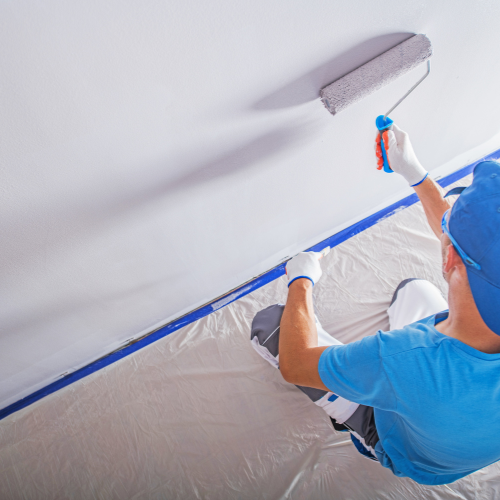How to prepare walls for painting
by siteadmin

Preparing walls to paint is an important step in getting the best possible finish. It can cause peeling paint, uneven surfaces, or cracks in the paint.
Preparing the wall properly is crucial, no matter whether you plan to paint a new plastered or old wall.
Clean the Walls
You must clean your walls before you begin painting. This step is critical to avoid paint damage and make sure your final result is great.
Although it can be tempting to skip this step, if you are serious about your home remodeling project, you will want to make sure that the walls are in top shape.
Use a mild detergent and water to clean walls you've painted. This will get rid of a lot of dirt and debris.
You should be aware that your walls may need more intense cleaning if they are extremely dirty.
White vinegar is a good option for cleaning stained walls. But, if that fails to work, it might be worth mixing dish soap with warm water. You can also try a paste made of baking soda and warm water to remove stubborn stains.
Eliminate all Debris
To ensure that your paint job looks great and stays on the walls for a longer time, remove all debris. This includes dirt, dust, and cobwebs.
It's easy to clean rooms that have not been used much. A microfiber cloth can be attached to the end a broom for reaching hard-to reach places and corners.
It's time for you to clean your walls. This can usually be done with water and some soap.
You may have to create a cleaning solution if your walls are very dirty. TSP or similar cleaners might be required if there are grease marks on your walls or crayon marks in your children's rooms.
Fill cracks and holes
It is important to avoid painting over any holes or cracks in walls when you are painting them. There are quick and simple ways to fix these imperfections, so your project will look perfect.
Use a putty knives to apply a small amount joint compound to crack. Drag it down into crack and push it in. You can then tape the crack using mesh tape.
To make ceilings, you can widen the crack by applying spackling compound. This will ensure the filler is evenly distributed and helps to prevent it falling back into your hole.
To level the crack or hole, sand it before you paint. This will help it blend in with the wall better and ensure that your paint job looks great. Wear a dust mask to avoid inhaling particles while sanding.
Sand the Walls
Sanding the walls prior to painting them will make them more uniform in texture. This is crucial for paint to stick well. This is a must regardless of what wall material you have and the paint texture.
The result you desire will dictate the grit of your sandpaper. Grit 220 gives a rougher finish while Grit 325 smoothens most surfaces.
Before you begin sanding walls, clean them well. This will take out any grime, hair, and dust that may have accumulated.
You will sand all surfaces of the walls using a sanding pad and 80-grit paper. You can remove large ridges and other uneven areas by using circular motions.
Primer can be applied once the walls have been sanded. Primer will stop paint bleed-through and ensure your paint sticks to the walls for a long time.
413 Turnberry Way, Souderton, PA 18964
Preparing walls to paint is an important step in getting the best possible finish. It can cause peeling paint, uneven surfaces, or cracks in the paint. Preparing the wall properly is crucial, no matter whether you plan to paint a new plastered or old wall. Clean the Walls You must clean your walls before you…
Recent Posts
- Why You Should Invest in a Salon Treatment for Your Hair in Houston
- Sophisticated Exterior Painting Methods: Advice for a Perfect Coat
- Sophisticated Exterior Painting Methods: Advice for a Perfect Coat
- Lou’s Painting Company Sets New Standard for “Above and Beyond” Painting Services
- Supreme Coats Painting and Epoxy: Redefining Home Painting in Lapeer, Oxford, and Lake Orion
